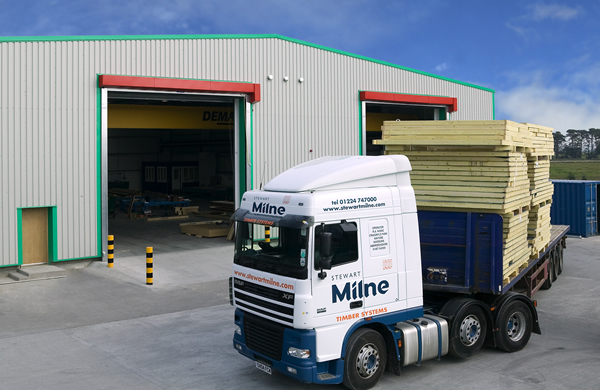
Can OSM offer a solution to the housing shortage?
Chris Seeley, a consultant for the Central Housing Investment Consortium (CHIC), explores how the shortage of new builds can be remedied with off-site manufacturing solutions (OSM).
For the past 25 years, I have been committed to affordable social housing; now, I believe we have the solution – and with the housing crisis reaching a crescendo, it’s just in the nick of time. We finally have the technology and understanding to deliver five-star affordable modular housing.
These solutions are delivered via OSM, a method recently recognised by the Government as way to rapidly increase housing stock. But there are still many developers who haven’t delved into the world of modular housing or, worse, aren’t educating prospective homebuyers about the benefits of off-site manufactured homes, including timber framed houses.
OSM
Admittedly, they are fighting against some negative preconceptions that the general public have. However, engineers have worked hard over the past few decades to ensure modular properties are built to exceed the quality of traditional homes.
But we must work to the concept of supply and demand, or the sector will continue to be dominated by more expensive, less efficient homes – precisely what’s causing the bottleneck.
The more developers use modular housing, the cheaper it will get. It is an approach that has the capacity to create a sustainable framework, which will drive significant change in the quality and cost of new build housing.
Modular housing benefits
Like all frameworks, volume increases the effectiveness; in this case, through standardised design and documentation. The reason modular houses can be assembled quickly on-site is down to their pre-fabricated nature. The wiring and plumbing is already installed in pre-arranged locations, negating the need for electricians or plumbers during the build phase.
Modular houses often require simpler foundation details and weather doesn’t slow build time, as the homes arrive on site weathertight. By utilising a range of facades, homes can be occupied more quickly than would be the case with a brickwork skin.
Procuring modular homes through a consortium further improves efficiency and reduces costs. Members benefit from economies of scale, gaining significant savings which can be reinvested.
A procurement consortium is made up of a team, consisting of main management contractors, architects and client representatives, who all have the best interests of the housing sector at heart, and are all working towards a common goal: delivery of more housing. If this isn’t the solution, I don’t know what is.
Latest news

3rd May 2024
Garador launches a new robust transmitter
Britain’s leading garage door manufacturer, Garador, has introduced a new robust hand transmitter designed specifically for use with its popular GaraMatic operators.
Posted in Access Control & Door Entry Systems, Architectural Ironmongery, Articles, Building Industry News, Building Products & Structures, Building Services, Doors, Facility Management & Building Services, Innovations & New Products, Retrofit & Renovation, Security and Fire Protection
3rd May 2024
Abloy UK welcomes Simon Wilson as Business Development Manager for healthcare
Abloy UK has further strengthened its team with the appointment of Simon Wilson as Business Development Manager for the Healthcare Sector.
Posted in Access Control & Door Entry Systems, Architectural Ironmongery, Articles, Building Industry News, Building Products & Structures, Building Services, Doors, Facility Management & Building Services, Health & Safety, Recruitment, Retrofit & Renovation, Security and Fire Protection
3rd May 2024
New head of marketing for Building Product Design
Leading UK manufacturer Building Product Design Ltd has promoted John Mellor to the role of head of marketing overseeing its three market-leading brands.
Posted in Articles, Building Industry News, Building Products & Structures, Building Services, Facility Management & Building Services, Insulation, Membranes, Recruitment, Restoration & Refurbishment, Roofs, Sustainability & Energy Efficiency, Walls
2nd May 2024
Gilberts Blackpool: Facing Data Centre Ventilation
Gilberts is enabling data centre architects and constructors to face the challenge of delivering a sustainable ventilation strategy.
Posted in Air Conditioning, Articles, Building Industry News, Building Products & Structures, Building Services, Facades, Facility Management & Building Services, Heating, Ventilation and Air Conditioning - HVAC, Information Technology, Restoration & Refurbishment, Retrofit & Renovation, Sustainability & Energy Efficiency, Walls
 Sign up:
Sign up: 